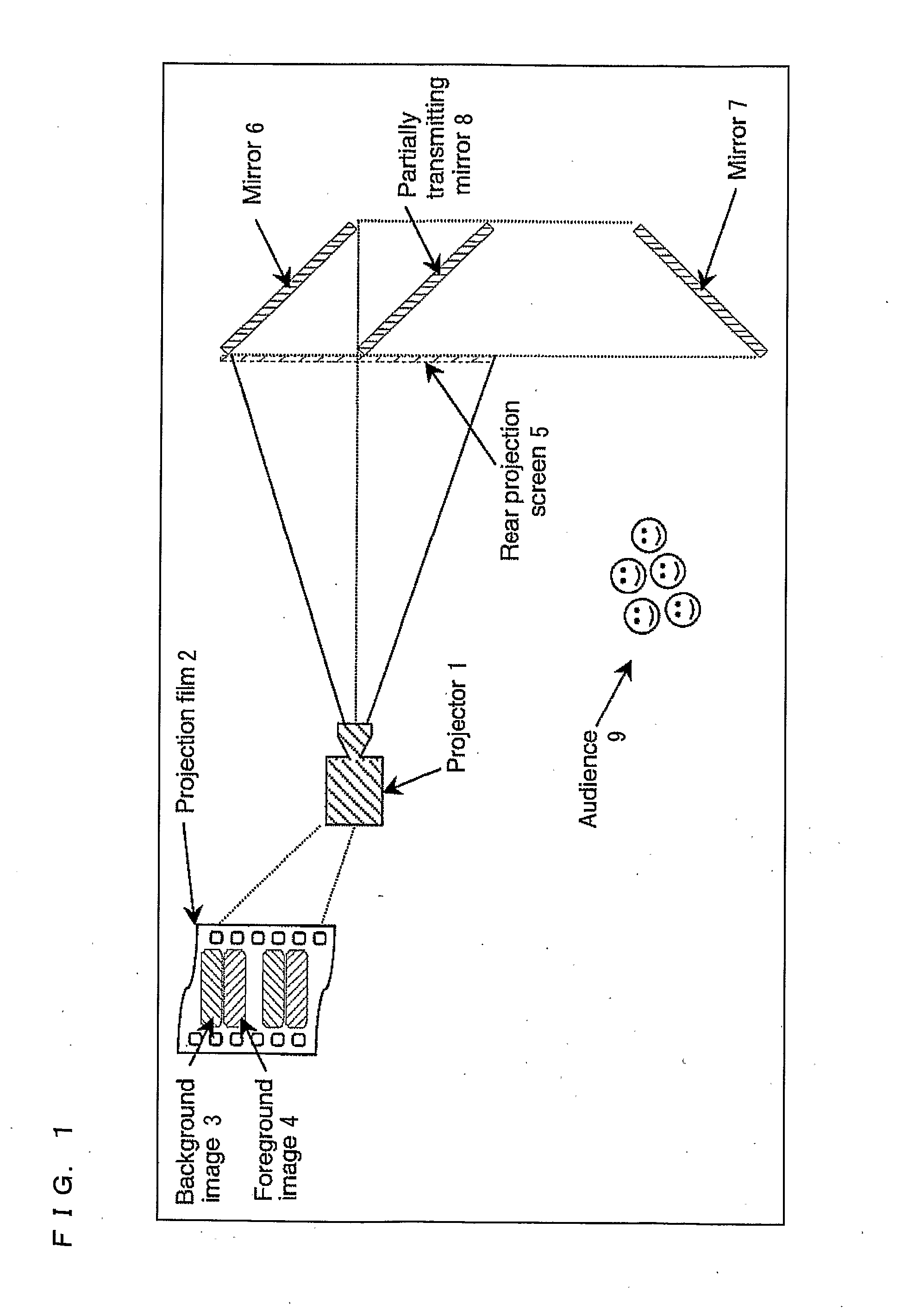Display, instrument panel, optical system and optical instrument
a technology for optical systems and instruments, applied in the field of displays, can solve the problems of reducing the visibility or intelligibility of images, and limiting the realism of displays, so as to reduce the length of such instruments, increase the width, and reduce the length
- Summary
- Abstract
- Description
- Claims
- Application Information
AI Technical Summary
Benefits of technology
Problems solved by technology
Method used
Image
Examples
Embodiment Construction
[0108]FIGS. 8(a) and 8(b) illustrate the construction of a display and two operational modes of the display. The display comprises a backlight 60 disposed behind a spatial light modulator (SLM) in the form of a liquid crystal device (LCD) 61. First and second partial reflectors 62 and 63 are disposed in front of the LCD 61 (on the viewer side thereof) with polarization-modifying optics 64 disposed between the reflectors 62 and 63. The reflectors 62 and 63 are separated from each other by an appropriate spacing for producing a depth-shifted image and are parallel to each other and to an image surface of the LCD 61. For example, the partial reflectors 62 and 63 may be arranged to reflect one polarization state of light and to transmit the orthogonal state or may be partially reflecting mirrors (or combinations of reflecting elements) of some other type. The polarization optics 64 are arranged to change at least one polarization state of light passing in either or both directions throu...
PUM
| Property | Measurement | Unit |
|---|---|---|
| wavelengths | aaaaa | aaaaa |
| angle | aaaaa | aaaaa |
| angle | aaaaa | aaaaa |
Abstract
Description
Claims
Application Information
 Login to View More
Login to View More - R&D
- Intellectual Property
- Life Sciences
- Materials
- Tech Scout
- Unparalleled Data Quality
- Higher Quality Content
- 60% Fewer Hallucinations
Browse by: Latest US Patents, China's latest patents, Technical Efficacy Thesaurus, Application Domain, Technology Topic, Popular Technical Reports.
© 2025 PatSnap. All rights reserved.Legal|Privacy policy|Modern Slavery Act Transparency Statement|Sitemap|About US| Contact US: help@patsnap.com



